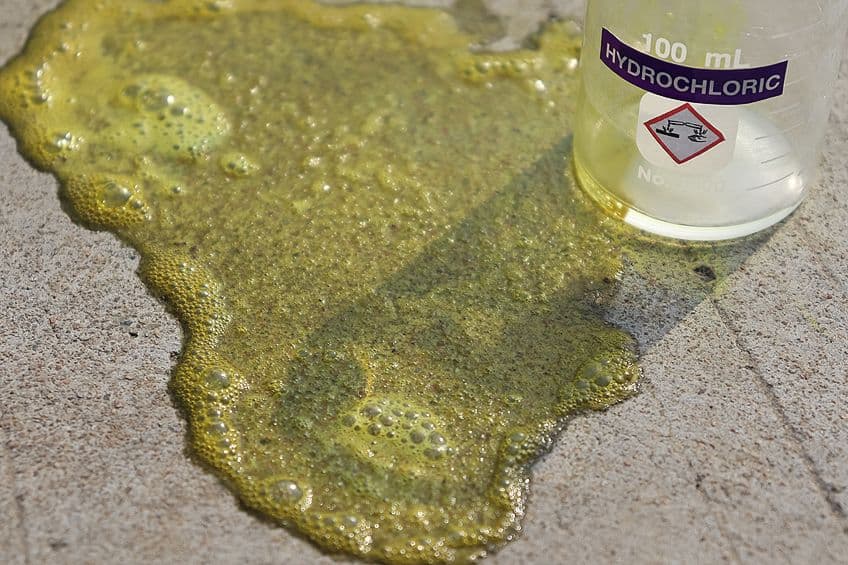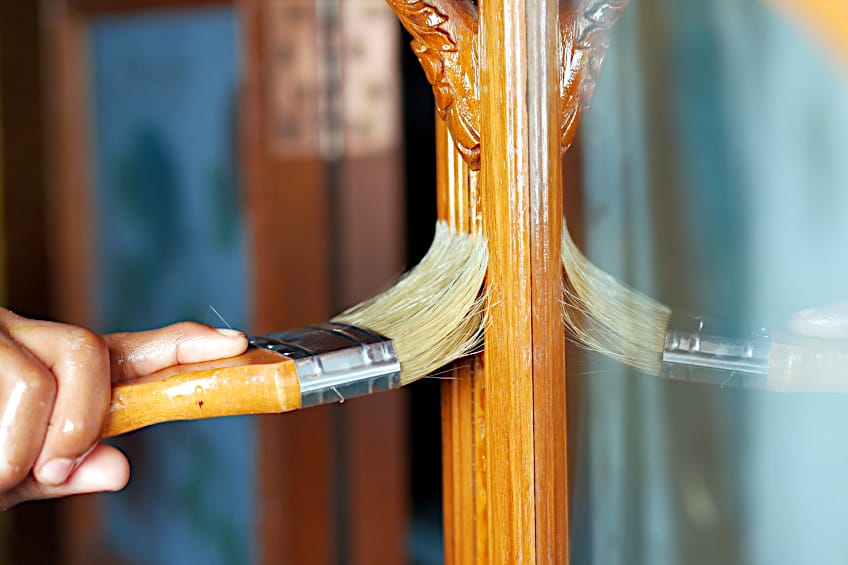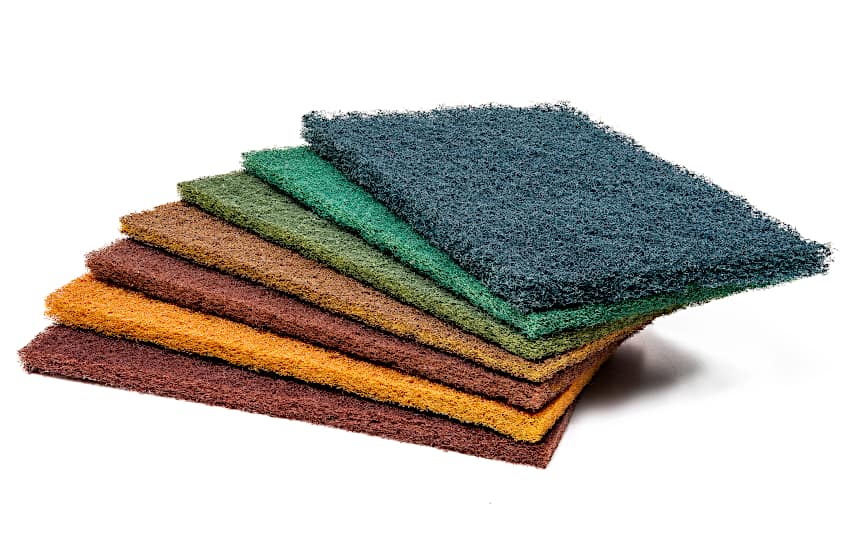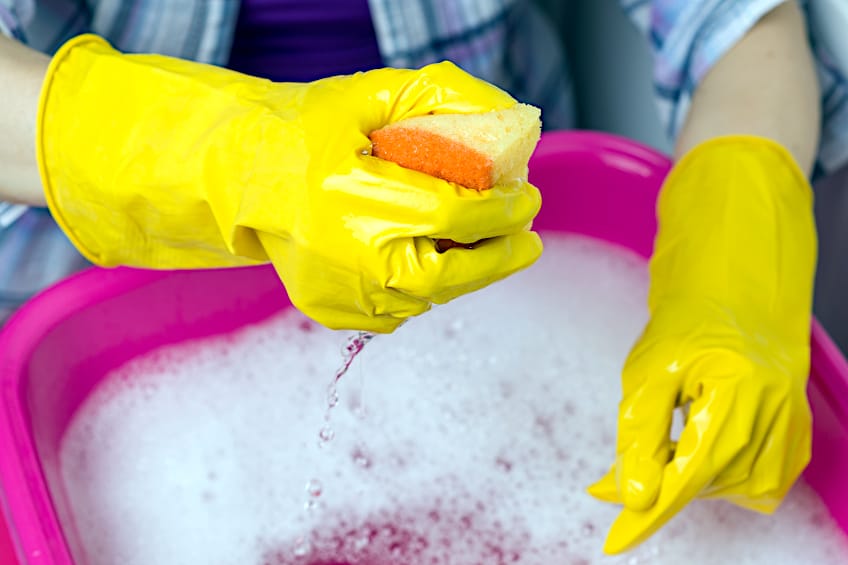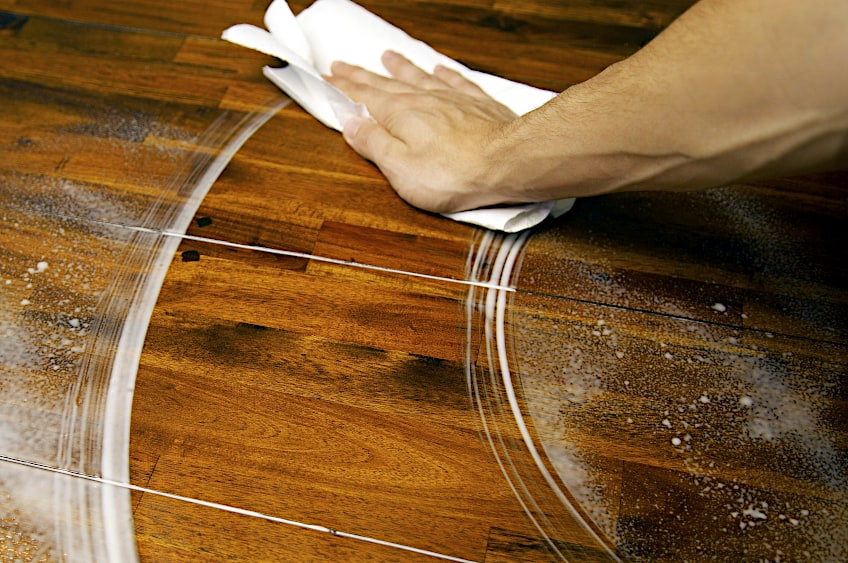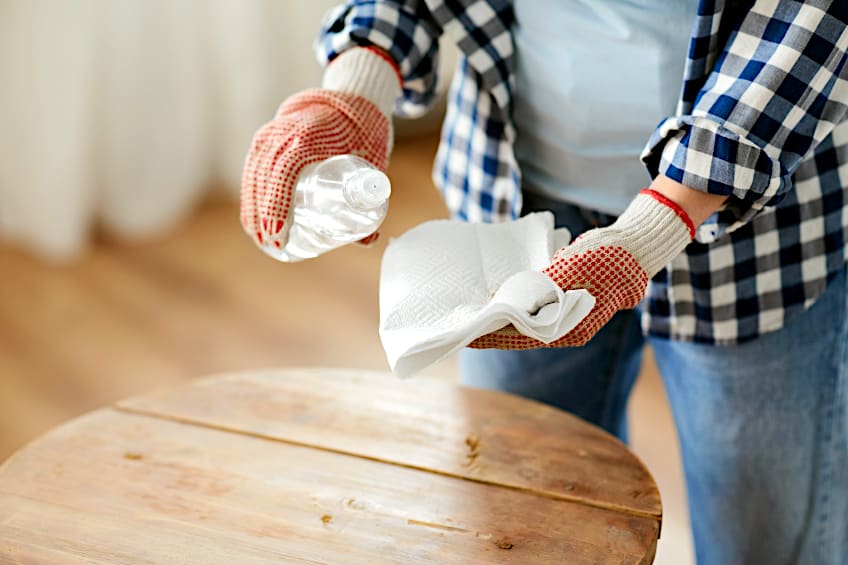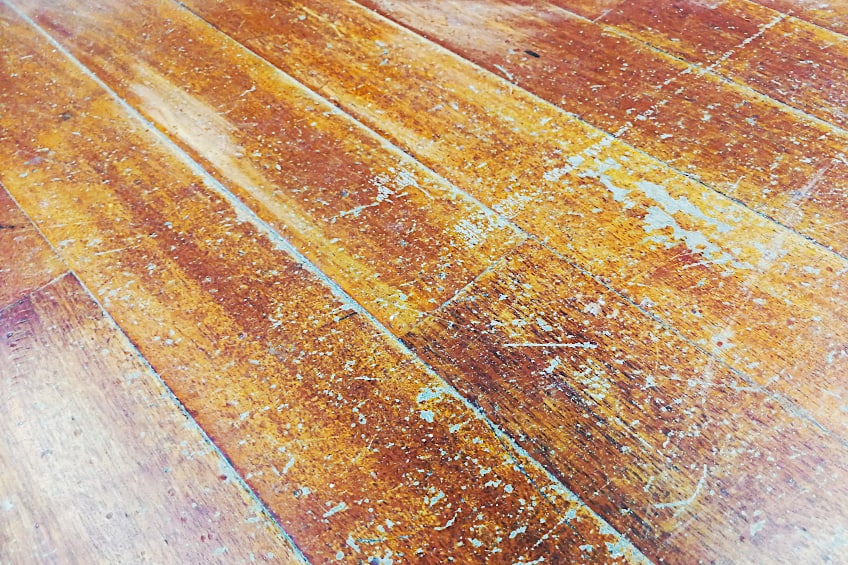How to Use Liquid Sandpaper – Chemical Deglosser Tips
This post may contain affiliate links. We may earn a small commission from purchases made through them, at no additional cost to you. You help to support resin-expert.com
When it comes to giving old furniture or materials a new lease of life, a handful of great products can be used to make things much easier for you. If you are an experienced DIY expert, you would have probably heard about liquid sandpaper, also known as liquid deglosser. But what is it and how does it work? Below, you will find out how to use liquid sandpaper and everything you need to know about it.
Table of Contents
Understanding Liquid Sandpaper
Liquid sandpaper is very different from standard sandpaper and it is not a blended variation of the latter either. Instead, Liquid sandpaper is in fact a chemical variation that is an excellent substitute for hand sanding as it is significantly less labor-intensive, but we will dive into the benefits of this product a bit later.
Fundamentally, liquid sandpaper is a heavily diluted paint stripper that softens the finish on any given surface without removing it.
This results in a dulled finish that is great for restoring old furniture with a fresh coat of paint. Using liquid sandpaper comes with a variety of advantages and disadvantages alike, so let us take a quick look at them.
The Pros and Cons of Using Liquid Sandpaper
Liquid sandpaper is a convenient product but it is far from perfect. Like any other product that is currently available, you will need to ensure that you have a clear understanding of how it works and what you should not do with it. Since this is a chemical product, you should approach it the same way you would with any other chemical-based substance.
To many of us, liquid sandpaper has much more advantages than disadvantages. However, you need to be very mindful of the dangers that come with working and handling this product as you can easily inhale a significant amount of fumes from this product. This is why it is important to work in a well-ventilated area while wearing a high-quality respirator. You should also avoid getting it on your skin as you could end up with nasty chemical burns.
One of the biggest health risks does not directly come from liquid sandpaper. Instead, you are much more prone to run into a bunch of health issues when using it on surfaces that are coated in lead paint. Inhaling fumes from lead paint could put you in the hospital if you are not careful, so the best thing to do is remove all of the lead paint and clean up all of the dust and leftover pieces of paint.
If you are wondering, “What is liquid sandpaper best used on?”, the answer is very simple. Depending on the product that you have bought, you will be able to use it on a range of surfaces such as metal, wood, plastic, and so on. Furthermore, it is perfect for intricate surfaces as you will be able to brush it onto a range of surfaces regardless of the design.
When it comes to mess, we all know that traditional sandpaper is known for making a huge mess as it generates a lot of dust. In most cases, you can easily use liquid sandpaper without laying down any newspaper or tarp. When removing liquid sandpaper, you will find that the majority of the mess will stick to a rag or a lint-free cloth. Ultimately, liquid sandpaper has more advantages compared to the disadvantages that it has to offer.
- Less effort needed
- Capable of reaching tight corners and complex surfaces
- Will not remove any materials
- Less cleanup needed
- Cannot be used to remove materials
- Potentially toxic and harmful to the environment
- Emits harmful fumes
What Is Needed to Get Started?
You will need liquid sandpaper if you are looking to get rid of the glossy finish that has been provided by finishes such as lacquers and stains. The reason you would use this product is to get your paint to stick to the surface, particularly if the surface is still in good condition. So, without any scratches or chips, there is no need to use low-grit sandpaper to get rid of the imperfections.
Before you get started, you will need to prepare yourself for the work ahead. Since this is a chemical, you will need to ensure that you are wearing a respirator. This is because the fumes that are emitted from this product are highly toxic, bad for your skin, and extremely flammable. For this purpose, you will require the following materials to begin.
- Protective gloves
- High-quality respirator
- Rags or scouring pads
- Paintbrush
- Liquid sandpaper
- Wood conditioner
Keep in mind that the aforementioned products are the bare minimum that is required to complete this project. There are different types of products available from different manufacturers, with some of them called liquid deglosser, so do not let the name throw you off. Overall, most of these products can be found at your local hardware store and are relatively inexpensive.
Preparing the Surface for Liquid Sandpaper
Before you can learn how to use liquid sandpaper, you need to know which surfaces it can be applied to. The process does not take as long as you would expect; however, you will need to be meticulous when it concerns your preparation. Since there are plenty of factors to consider, we have covered everything you need to know below.
Important Safety Precautions
As is the case with any other chemical compound, you will need to exercise extreme caution when working with liquid sandpaper. There are generally three things that you will need to wear when working with this substance; chemical-resistant goggles, gloves, and a high-quality respirator. Furthermore, you will need to ensure that you are working in a well-ventilated area. Not only will this allow you to prevent any type of contamination of the area you are working in, but it will also prevent you from inhaling dangerous fumes.
Naturally, we do not recommend eating, smoking, or drinking anything near your workspace and if you are unable to remove any liquid sandpaper stains from your clothing, it is better to throw it away.
How to Prepare the Surface for Liquid Sandpaper
Since liquid sandpaper is used to remove the top layer of gloss, any object or impurity that is left on the surface will have a negative effect on the quality of the finish. Before you can apply the liquid sandpaper, wash the surface with mild soap and warm water. We highly recommend using a soft sponge as this will avoid scuffing the surface.
You will need to ensure that every piece of dirt and dust is completely removed from the surface and this is best done with warm water as it will remove any stubborn stains and dirt. Once you have cleaned the surface, wipe it down again and allow it to dry for at least 15 minutes. The surface must be entirely dry before applying the liquid sandpaper.
Preparing the surface for liquid sandpaper is a crucial step as this will determine how effective the product will be. Failure to follow the aforementioned steps will result in wasted product and you could potentially damage the surface of your project. With any project, preparing the surface is the first thing you should do.
How to Apply Liquid Sandpaper
Applying liquid sandpaper is a relatively simple process that can be completed in a few hours from the first step to the last. We have already established that this is a much better alternative when compared to standard sandpaper as it is significantly less labor-intensive. You can start by preparing the surface and removing any dirt and stubborn stains. Be sure to use soap and warm water, as this will easily get rid of any lingering dirt.
Once you have cleaned the surface, use a towel to dry it, and then allow it to air dry for a minimum of 15 minutes.
After cleaning the surface, you will now be able to apply the liquid sandpaper. To ensure that you have an even application, you should either use a lint-free cloth, scouring pad, or a paintbrush. For tight and sunken parts of the surface, use a smaller paintbrush to apply slow strokes. Once you have applied the liquid sandpaper, allow it to dry; however, this will vary from one brand to the next, so read the manufacturer’s instructions before applying the product.
Depending on the type of liquid sandpaper that you use, the removal method will vary. If the liquid sandpaper can be rubbed off, then you can use a lint-free cloth or a clean rag to remove the rest of it. If necessary, you can apply a second layer of liquid sandpaper.
If you feel the need to do so, you can add a coat of wood stain or paint. However, if there are scratches or holes on the surface, it is best to fill and remove those before applying any type of finish. Understanding how to use liquid sandpaper is an important part of the process of applying it. Additionally, you will need to read the instructions provided by the manufacturer. This is because each product is different and will generally be designed to remove different finishes on various surfaces.
Various Techniques for Applying Liquid Sandpaper
Using any type of liquid sandpaper is quite simple as each manufacturer will provide a set of instructions that you will need to follow. Instead of dumping it onto the surface and swirling it around, expecting something to happen. However, if you apply the product to a surface, the process, while very specific, is the same regardless of the brand that you have chosen.
However, understanding when to use liquid sandpaper and standard sandpaper is very important. If you are worried about damaging the surface of your project with conventional sandpaper, you can be assured that liquid sandpaper will safely remove the glossy coat on the surface.
Common Mistakes to Avoid
Liquid sandpaper is not a foolproof product and there are ways that you can ruin the effectiveness of the product. The biggest mistake that most product users make is being impatient, not only when applying liquid sandpaper, but also when it comes to the preparation phase. By following the right procedures, you will not need to ask, “Does liquid sandpaper work?” as you will now know!
Each part of the process is equally as important as the next and ultimately, the longer you wait, the better your results will be. Another mistake that is commonly made is not disposing of leftover liquid sandpaper in the right manner.
This is an incredibly hazardous substance and you will need to separate it from normal trash and take it to a hazardous waste facility. Never attempt to flush it down the toilet or rinse it away in a sink, as this will contaminate local waterways.
How Long Should You Wait Before Applying Primer or Paint?
When it comes to applying a finish, this can only be done once the liquid sandpaper has dried and then been removed. Once the surface has been completely rid of liquid sandpaper, you will be able to apply a finish of your choice. The waiting period will vary from one brand to the next; however, it is usually around 15 minutes to air dry.
We do not recommend trying to accelerate the process by using a heat gun, as this may damage the surface of your project.
Cleaning Up
Liquid sandpaper is a toxic chemical substance that needs to be handled with extreme care. We have explained how to get rid of it, but when it comes to the cleanup process, you should be very careful. It is best to get rid of anything that has been contaminated by the liquid sandpaper as this product emits volatile organic compounds (VOCs) that can cause a range of health issues.
You need to ensure that your tools and your workspace are completely clean once your project has been completed. The last thing you need is to have your pets or children come into contact with this product. Additionally, if you are keen on storing this product, you will need to ensure that you keep it in a cool and dry area in a tightly sealed container.
After you have used liquid sandpaper, any brushes that have been used should be rinsed in denatured alcohol or mineral spirits. You can also use these chemicals to wipe away any residue. However, if you have used rags then it is best to completely discard them after wrapping them in a plastic bag, as these cannot be completely cleaned.
Choosing the Right Product
Before you can start using it, you need to understand the question, “what is liquid sandpaper”, and how to choose the correct product. We have already covered the former, but it is very important to know how to choose the right product as this will make your project much easier to complete. Below we have provided a range of factors that need to be considered before learning how to use liquid sandpaper.
Choose a Reputable Brand
When you are after a great liquid sandpaper brand, one of the most important factors to consider is user reviews. Sure, the advertising could be incredible with all sorts of claims of how good the product is; however, if a large group of people is claiming that a product is good or bad, it is a good idea to follow this advice.
While you could be tempted to save a few dollars and opt for a cheaper brand, the reality is that you will usually get what you pay for.
You will need to accept that some products are simply not as good as others, which means spending a bit more. If you are not keen to spend a lot of money on liquid sandpaper, you could try and shop around for better deals.
Understand What You Are Working On
It makes no sense to buy a product before understanding the nature of your project and this is why it is very important to have a clear understanding of what you are doing. By knowing what type of material you will be working with, you will know what type of product to buy. The process of buying liquid sandpaper is easy, but you will need to know what it will be used for.
For instance, if you are working on a wood surface, you will require a liquid sandpaper product that is developed to work on that surface. If you try to use one that is designed for metal, you could ruin the surface of the wood as the liquid sandpaper that is designed for metal will likely burn through the surface of the wood, acting as a paint stripper.
General Toxicity
If you consider what this product is used for, which is removing the surface of paint or other finishing, there is no doubt that it can be very harmful to you. Fortunately, there are water-based liquid sandpaper products that contain significantly fewer VOCs than oil-based products. Water-based liquid sandpaper products are also inflammable, with a few of them being biodegradable as well. However, even water-based liquid sandpaper is harmful as they contain a variety of chemicals that can burn the eyes and irritate the skin.
Whether you have chosen to use water- or oil-based liquid sandpaper, always exercise the necessary steps to ensure that you are completely safe when using these products. This also applies to biodegradable products despite being made from plant-based sources.
These products remain quite harmful to you and the environment, so always be careful and take the necessary measures to ensure that your face and skin are covered during the process. Ultimately, if you follow the necessary safety steps provided by us and the manufacturer, there is no reason why you would not be safe.
Liquid sandpaper is a great product that can yield brilliant results if it is used correctly. While it does come with a few disadvantages due to being a chemical substance that essentially strips a thin layer of paint, it has been proven to be very useful. Ultimately, we recommend that you follow our guide and you should see amazing results every time you use this product. Be safe, and we wish you the best of luck with your project!
Frequently Asked Questions
Does Liquid Sandpaper Work on All Surfaces?
Liquid sandpaper will generally work on most surfaces such as stain, lacquer, polyurethane, enamel, and varnish. However, you should look at what the manufacturer recommends before applying it to the surface.
Is Liquid Sandpaper Equal to Traditional Sandpaper?
Most experts would argue that it is better than normal sandpaper; however, we believe that both of them have their place in your workshop or garage. Both products also have distinct disadvantages that should be noted.
Does Liquid Sandpaper Smell Bad?
Some of these products do have an unpleasant smell; however, there are others that do not have it. All you need to do is shop around and you will generally stumble upon products that have different scents.



